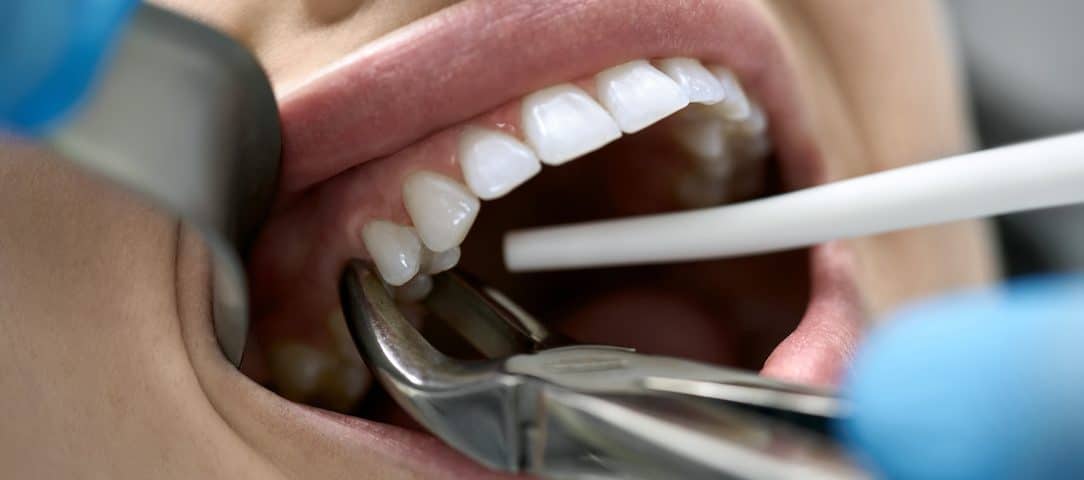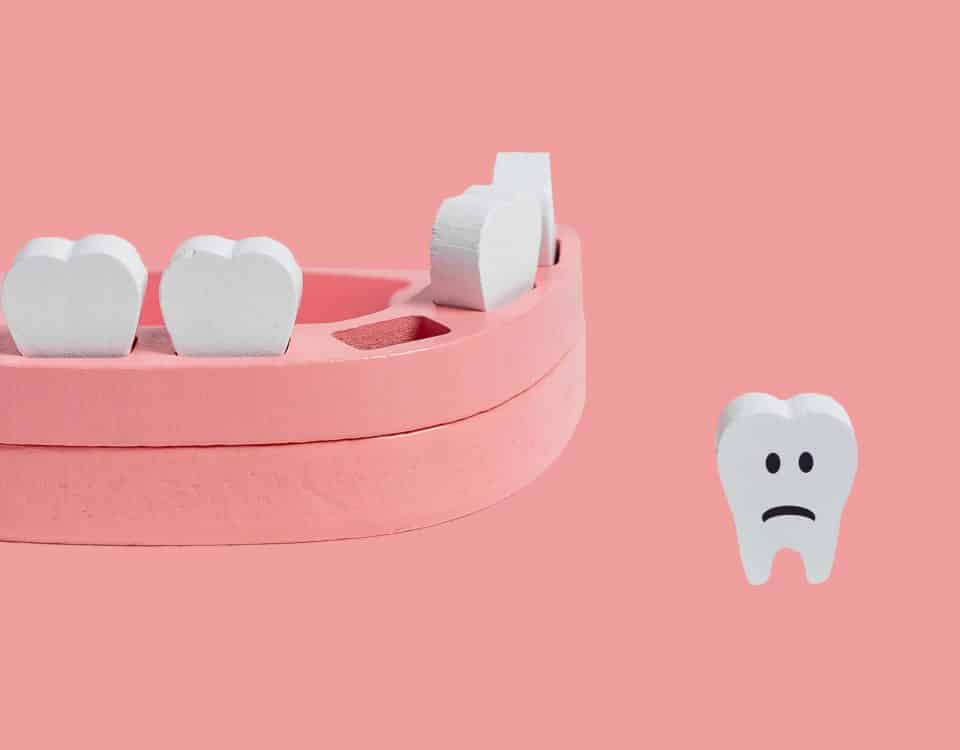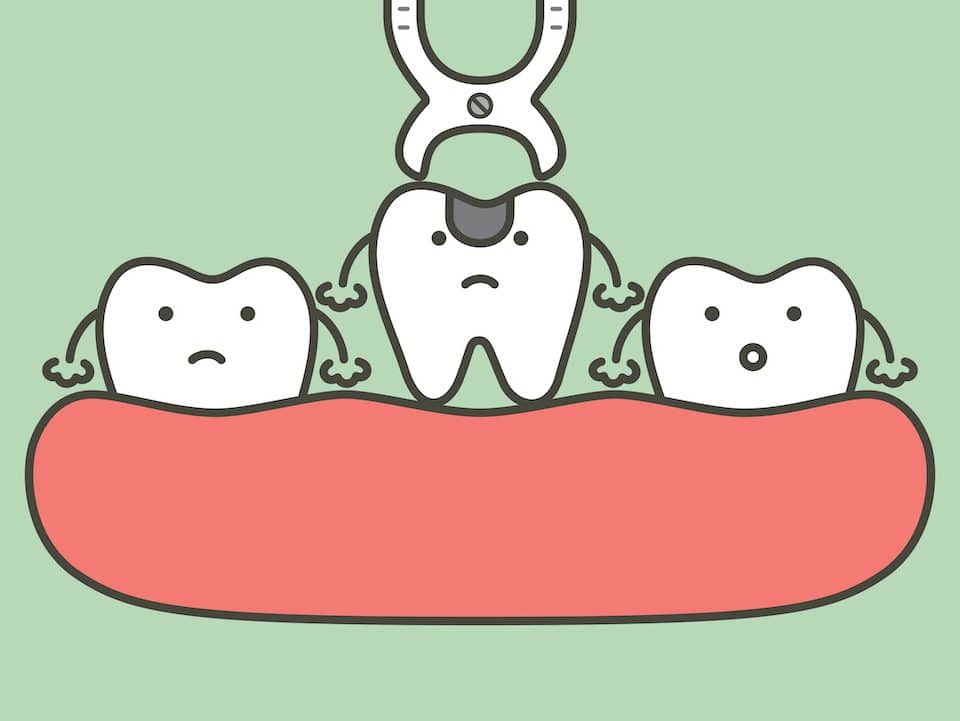Tooth Extraction: When Will Dentists Pull Teeth?

What Services Are Provided in General Dentistry?
March 26, 2020
COVID-19: An Update on Our Policies and Procedures
July 2, 2020Tooth extraction, or tooth pulling, is when a dentist removes a tooth from your mouth. This is most commonly done for teens who can’t lose the last of their baby teeth or adults who need their wisdom teeth out, but there are other reasons a tooth might need to be extracted.
What is a Tooth Extraction?
A tooth extraction is the removal of a tooth from its socket in the bone, according to Colgate. This common dental procedure is done everyday by dentists everywhere to help relieve the pain patients are feeling, to help give the patient a healthy mouth, and more.
Signs You Need a Tooth Pulled
There are some warning signs that you might notice when you need a tooth extracted. This could be: difficulty eating or talking, jaw pain or stiffness, difficulty opening your mouth, and tender gums. These can also be signs something else is wrong, which is why it’s critical you visit the dentist when you notice a problem.
Why Pulling Teeth is Done
Patients need teeth pulled for several different reasons. In most cases, it is younger children and teens who haven’t been able to lose all of their baby teeth on their own. However, adults can find themselves needing teeth to be removed as well. This can be due to:
Teeth crowding
Dental crowding is when the size of the jaw doesn’t match up with the size of the teeth. This can cause overcrowding, preventing other teeth from coming in properly, affecting your bite, and more. Crowded teeth can be corrected by orthodontic care, but sometimes removing the tooth is the best treatment plan.
Wisdom teeth can also cause teeth crowding. Since the wisdom teeth typically erupt later in life, it can shift teeth around, causing bite and alignment problems. Removing wisdom teeth can help protect any orthodontic care you have had, and prevent pain in the future.
Infection
If the tooth has succumbed to tooth decay, an extraction might have to happen. When the damage from tooth decay affects the center of the tooth where the blood vessels and nerves are, the pulp, it can cause infection. In many instances this can be healed with root canal therapy and antibiotics, however sometimes an extraction is necessary to prevent infection from spreading.
Pulling the tooth out might also be needed if you have a compromised immune system. If you have a tooth that is signaling risk of infection, then Dr. Varley might recommend the tooth go ahead and be pulled.
Gum disease
In the advanced stage of gum disease, the infection is so far developed that it can make you high risk for bone loss. This can lead to having to have a tooth removed to clean the bacteria out of the mouth and heal the advanced infection. The advanced stage of gum disease can be prevented by practicing good oral hygiene techniques at home and making sure that you see Dr. Varley often. In the early stages of gum disease, you might not be able to tell that you are having problems, however Dr. Varley is trained to notice the signs early on. When you catch gum disease early, you can reverse it and prevent having tooth loss later in life.
The Tooth Extraction Process
To remove a tooth, Dr. Varley will determine the best method based on the condition of the patient. In many cases, a simple extraction will do just fine. However, sometimes a surgical extraction is needed. Healthline explains the difference:
- A simple extraction: you will receive a local anesthetic that numbs the area around the tooth. This helps you only feel pressure, not pain, throughout the procedure. The dentist will then pull the tooth by using an instrument to loosen the tooth and forceps to pull it all the way out.
- A surgical extraction: with this type of extraction, you’ll receive both local and IV anesthesia to help you feel relaxed and prevent you from feeling pain throughout the procedure. This is needed when the dentist or surgeon needs to cut into your gums or remove bone around the tooth to be extracted.
Having a tooth pulled can make the mouth sensitive for a few days after the procedure. The main risks include dry sockets, bleeding that lasts more than 12 hours, infection, swelling, and more. Dr. Varley will go over all possible risks with you and address all of your concerns.
Make an Appointment with Stonebrook Family Dental
Dr. Varley and the team at Stonebrook Family Dental provides a friendly atmosphere to help you feel comfortable and at peace during your procedure and appointments. If you are having signs that you need a tooth pulled, give our office a call at (303)-872-7907. Our evening and Saturday hours provide you with access to dental care at your convenience. Don’t be in pain any longer, contact us today.



